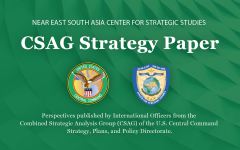Iran’s Elections, Wind of Change?
February 20, 2024 2024-02-20 16:57Iran’s Elections, Wind of Change?
CSAG STRATEGY PAPER
By: LTC René Berendsen, NLD Army (CSAG/CCJ5)
02 February 2024
Overview:
Shaped by the 1979 Iranian Revolution, the Iranian political landscape uniquely blends democratic and theocratic elements. The 12th parliamentary elections, the 6th Assembly of Experts elections on March 1, 2024, and the presidential elections in 2025 are playing pivotal roles in the future of Iran’s governance and, ultimately, in the probable succession of the Supreme Leader. Understanding the electoral processes and the implications of these elections is crucial for comprehending the dynamics of Iran’s political system and the potential consequences for the Middle East.
Key Points:
- The Iranian revolution laid the foundation for Iran’s unique hybrid political system that is characterized by democratic (elected parliament and president) and theocratic (legal system based on Islamic Law, clerics, and the Supreme Leader) elements.
- The concept of velāyat-e faqīh establishes the Supreme Leader as the highest authority on all matters.
- The Guardian Council plays a crucial role in the elections by supervising elections, as well as approving or disqualifying candidates.
- Hardline Conservatives hold a vast majority in Parliament and political institutions.
- The Supreme Leader is the longest-serving head of state in the Middle East. With the Supreme Leader aging, upcoming elections may be crucial regarding his succession.
- Barring unforeseen changes in the political landscape, the prevailing overall hardline conservative dominance is likely to persist.
View other USCENTCOM Combined Strategic Analysis Group (CSAG) papers here.
The opinions and conclusions expressed herein are those of a number of international officers within the Combined Strategic Analysis Group (CSAG) and do not necessarily reflect the views of United States Central Command, not of the nations represented within the CSAG or any other governmental agency.







